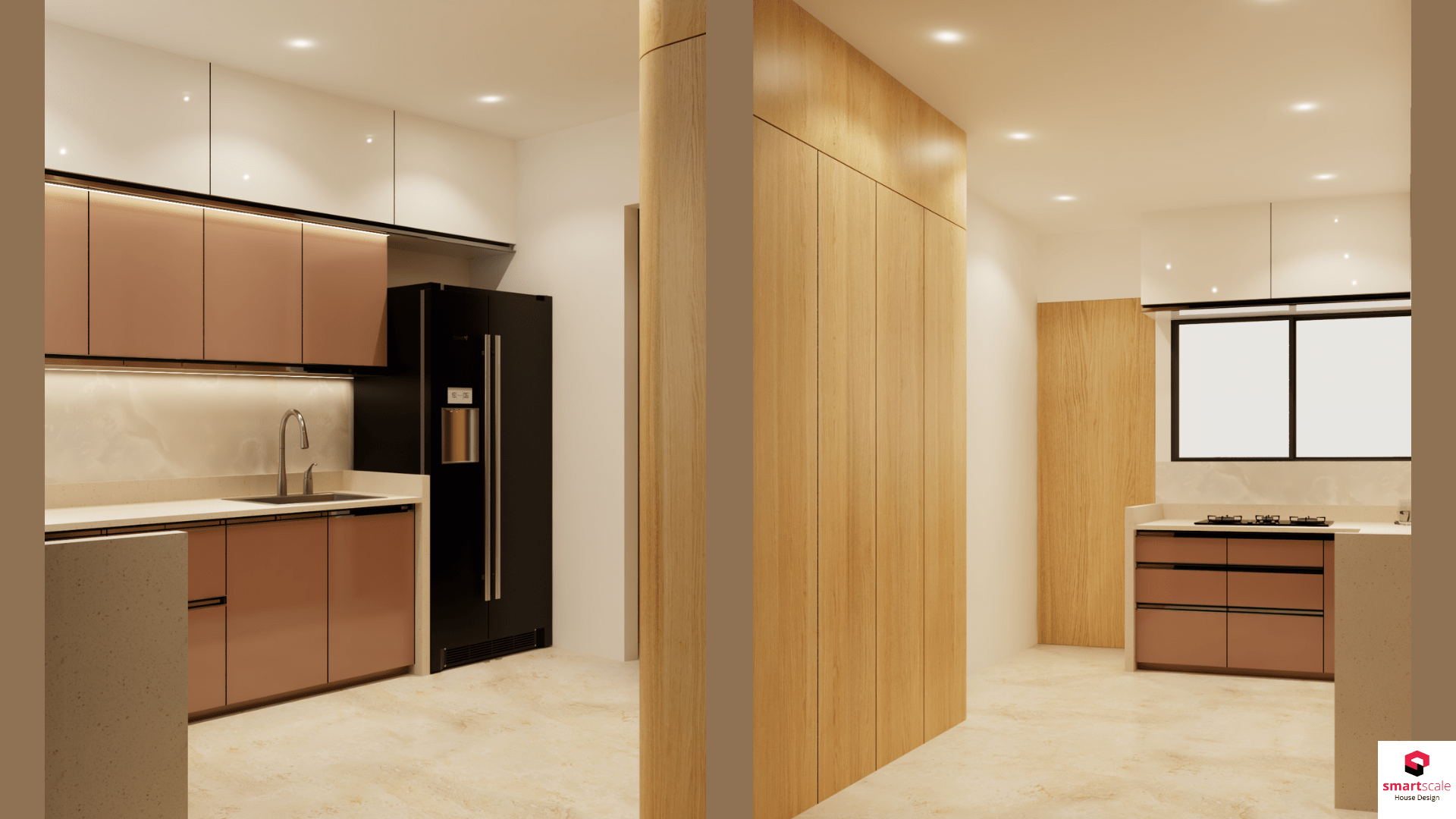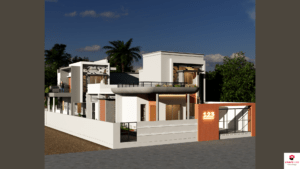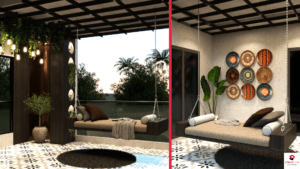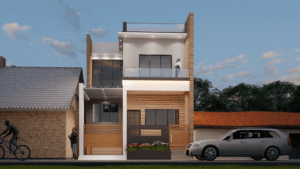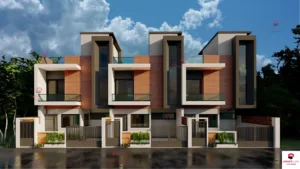When designing or renovating a kitchen, one important material that often gets overlooked is plywood. From cabinets to shelves and drawers, plywood plays a major role in the strength, durability, and look of your kitchen. But with so many types available, how do you know which plywood is best for kitchen space?
Let’s break it down in simple terms.
Table of Contents
ToggleWhy Use Plywood in the Kitchen?
Plywood is a man-made wood product made by gluing together several thin layers of wood, known as veneers. These layers are placed in alternating grain directions, which makes the final sheet stronger and more stable than natural wood. Because of this cross-layering method, plywood doesn’t easily bend, crack, or warp over time even with regular use.
That’s exactly why plywood is commonly used in kitchen interiors, especially for making cabinets, shelves, drawers, and modular kitchen structures.
But the kitchen is not an easy environment for materials. It’s a space that deals with a lot of challenges every day, like:
Heat from cooking appliances like stoves, ovens, and microwaves
Moisture from water spills, steam, and cleaning
Constant use opening and closing cabinets, storing heavy utensils, and moving items around
All these conditions can easily damage regular wood or low-quality boards. That’s why choosing the right type of plywood is very important. The plywood you use must be durable, moisture-resistant, and able to handle daily wear and tear without getting damaged.
Using the right grade of plywood not only makes your kitchen last longer but also keeps it looking good and functioning smoothly for years.
Best Types of Plywood for Kitchens
1. BWR Grade Plywood (Boiling Water Resistant)
BWR plywood is engineered to resist water and moisture. It is bonded with phenol-formaldehyde resin, which gives it water-resistant properties. It’s one of the most widely used plywood types in Indian kitchens.
Why is it suitable for kitchens?
Kitchens are high-moisture zones. BWR plywood performs well in these environments as it resists water penetration, reducing the chances of swelling, warping, or rotting. It also has good strength and can bear daily usage.
Advantages:
Water-resistant and suitable for areas with regular exposure to steam and spills
More affordable than marine (BWP) plywood
Readily available in the market
Suitable for most modular kitchen setups
Common Applications:
Cabinet carcasses
Kitchen drawers
Overhead storage
Under-sink cabinets (if occasional exposure to water)
Ideal for:
Most Indian kitchens where cooking is frequent and moisture is present, but not in extreme amounts.
2. BWP Grade Plywood (Boiling Water Proof) / Marine Plywood
BWP or marine plywood is the highest grade in terms of water resistance. It is manufactured using superior quality hardwood veneers and bonded with undiluted phenol formaldehyde resin under high pressure and temperature. It complies with IS:710 standards for waterproof plywood.
Why is it the best for wet areas?
This plywood can withstand prolonged exposure to water without losing its shape or strength. Even when soaked in water for hours, it doesn’t delaminate or warp. It’s ideal for areas prone to constant moisture.
Advantages:
Completely waterproof and durable
High strength and long life
Can be used in both residential and commercial kitchens
Resists termite and fungal attacks if treated properly
Common Applications:
Cabinets below the sink
Kitchen trolleys
Countertop base cabinets
Wet zones of the kitchen
Ideal for:
Premium kitchens, or areas that experience heavy water usage on a regular basis.
3. MR Grade Plywood (Moisture Resistant)
MR plywood, also known as commercial plywood, is bonded using urea-formaldehyde resin. It is not waterproof but can handle low humidity and occasional moisture exposure.
Why use it?
It is a cost-effective material for dry areas of the kitchen where there is little risk of water exposure. Though not suited for wet zones, it is fine for top cabinets and other less-exposed furniture.
Advantages:
Economical and easily available
Suitable for dry zones or low-use kitchen units
Lightweight and easy to work with
Common Applications:
Wall-mounted cabinets
Pantry storage units
Open shelves
Drawer dividers
Ideal for:
Budget-friendly kitchens where water exposure is minimal.
4. Gurjan Plywood
Gurjan plywood is made from hardwood obtained from Gurjan trees, mainly found in Southeast Asia. It is known for its density, durability, and natural strength.
Why is it preferred for premium kitchen designs?
Gurjan plywood has a tighter grain and is stronger than regular plywood. It is often used along with BWR or BWP treatments, making it suitable for kitchens where strength and longevity are top priorities.
Advantages:
Stronger and heavier than softwood plywood
Lasts longer and handles heavy loads well
Offers a high-quality finish for interior aesthetics
Often pre-treated for termite and water resistance
Common Applications:
Premium modular kitchen cabinets
Kitchen shutters with veneer or laminate finish
Base units and tall pantry units
Furniture-grade kitchen installations
Ideal for:
Homeowners seeking premium kitchen interiors that combine strength, durability, and aesthetics.
Key Features to Look for in Kitchen Plywood
When selecting plywood for your kitchen, it’s important to choose a type that can handle the environment and daily use. Here are the main features to consider:
1. Water Resistance
Kitchens are exposed to moisture almost every day whether from spills, steam, or cleaning. Choose plywood that is resistant to water, such as BWR (Boiling Water Resistant) or BWP (Boiling Water Proof). These grades are specifically designed to resist moisture and prevent swelling, warping, or delamination.
2. IS Mark Certification
Check if the plywood has been certified according to Indian Standards (IS).
IS 710 indicates marine-grade or BWP plywood, which is suitable for high-moisture areas.
IS 303 refers to BWR and MR grade plywood, which is suitable for general indoor use.
Choosing certified plywood ensures that the product meets industry standards for quality, strength, and durability.
3. Termite and Borer Resistance
Since kitchen areas are prone to pest attacks, it’s essential to choose plywood that is chemically treated to resist termites and borers. Untreated plywood may get damaged over time, especially in humid or warm climates where pests thrive.
4. Core Material Quality
Pay attention to the core material used in the plywood. Hardwood core plywood is stronger, denser, and more durable than softwood-based plywood. It has better load-bearing capacity and a longer life, making it ideal for kitchen use where strength is important.
Common Kitchen Uses of Plywood
Plywood is a versatile and durable material that is used throughout the kitchen in different ways. However, not all types of plywood are suitable for every part of the kitchen. Based on the exposure to moisture, weight, and function, here’s how to choose the right plywood for different kitchen components:
1. Cabinet Carcass (Structure)
The carcass is the internal framework or box structure of your kitchen cabinets the part that holds weight and stores utensils or groceries.
Recommended plywood:
Use BWR (Boiling Water Resistant) or BWP (Boiling Water Proof) grade plywood. These grades offer strength and resistance to moisture, which is important as kitchen cabinets are exposed to steam, spills, and cleaning.
2. Cabinet Shutters (Doors)
Cabinet shutters are the front panels or doors that are visible and used frequently. These require a smooth finish and moderate moisture resistance.
Recommended plywood:
Use BWR grade plywood or decorative plywood (such as veneer-faced or laminated plywood) that gives a good aesthetic look and can handle regular use.
3. Under-Sink Storage
This area is the most prone to water exposure, due to plumbing, leakage, or regular cleaning. Ordinary plywood will not last long in this zone.
Recommended plywood:
Use BWP or marine plywood, which is specially designed to withstand long-term contact with water without damage or decay.
4. Kitchen Drawers and Dividers
Drawers, cutlery trays, and internal dividers need to be functional and moderately moisture resistant. Since they don’t usually face direct water contact, a slightly lower grade can be considered.
Recommended plywood:
Use BWR grade for better durability, or MR (Moisture Resistant) grade if the area remains dry and is used for light storage.
Conclusion
So, which plywood is best for the kitchen?
If you’re looking for overall value and durability, BWR Grade Plywood is the best choice. It resists water, lasts long, and is affordable. But if you want something top-of-the-line for areas like under the sink, go with BWP or Marine Plywood. For dry areas or low-budget sections, MR grade plywood can be considered.
Always choose quality plywood from trusted brands and check for ISI certification. A good kitchen begins with good materials and plywood is the foundation.
Looking to design your kitchen with expert help?
Let SmartScale House Design guide you with smart material selection and custom design plans. Reach out today and turn your kitchen into a stylish, functional space built to last.

